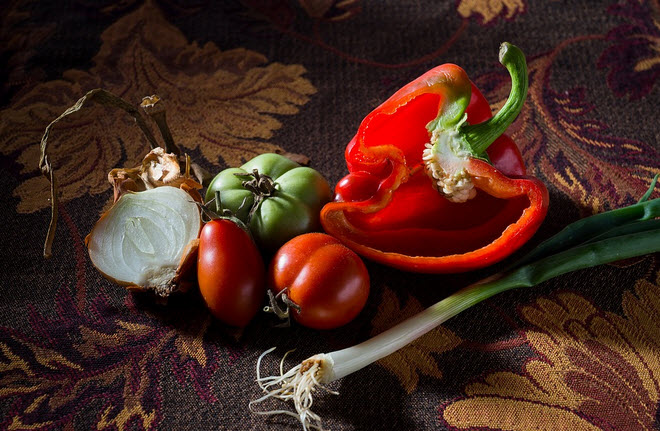
Am I getting enough iron?
Iron deficiency is one of the most commonly occurring nutritional deficiencies in humans, and unlike many other nutritional deficiencies it is actually quite common even in people in developed countries. You don’t have to be starving or on a strict vegan diet to develop an iron deficiency; it can happen to almost any of us since there are so many factors that impact not just the iron content in our diet but also our ability to absorb that iron.
Absorbing iron
Eating food that is rich in iron isn’t enough; we need to make sure that we actually absorb this iron so that the body can use it.
Here are a few examples of factors that can decrease your ability to absorb iron from the food:
- Certain health problems in the gastrointestinal tract that have a negative impact on your ability to absorb nutrients. Consult with your physician to find out if you are at risk of iron deficiency and what you can do to mitigate this risk.
- Certain substances that block our absorption of iron. Unfortunately, some of them are naturally present in certain foods. (Examples: phytic acid, tannic acid.)
- Fluoroquinolone antibiotics
Increasing absorption
Here are a few tips on how you may increase your absorption of iron from your diet.
- It is easier for the body to absorb heme iron than non-heme iron. If you are concerned about absorption, make sure you eat plenty of foods that are rich in heme iron.
- Vitamin C will boost iron absorption. When you eat iron rich food, ideally include plenty of vitamin C in the meal.
- If you want to absorb as much as possible when you make an iron rich meal, avoid eating it at the same time as oxylate rich foods and phytic acid rich foods.Oxylates and phytic acid both form insuluble complexes that bind iron in the gut, keeping it from being absorbed.Examples of ingredients that are rich in oxylates are rhubarb, buckwheat, carambola, parsley, spinach and Swiss chard.
Phytic acid is found within the hulls of seeds, including grains, nuts and pulses. It is also used as a food additive (E391). Certain food preparation techniques can be employed to break down the phytic acids.
Increasing iron absorption from dietary supplements:
- Chose a supplement where the iron is chelated to amino acids.
- Avoid supplements with only elemental iron (reduced iron), since this type of iron is poorly absorbed by the human body.
- Don’t take your iron supplement at the same time as eating or drinking something that inhibits iron absorption. (See above)
- Do take your iron supplement at the same time as something that increases iron absorption, such as vitamin C.
Losing iron
If you lose an abnormal amount of iron, you need extra iron to fix this – more than the recommended daily intake. In some cases, simply eating iron rich food or taking oral supplements might not be enough and a physician needs to prescribe you iron injections to quickly bring your iron level up to a healthy point again. If you have an ongoing issue with abnormal iron loss, regular injections may be required.
Examples of situations where abnormal amounts of iron may be lost:
- A bleeding wound
- An internal problem that causes blood loss, such as ulcerative colitis or colon cancer
- Heavy menstrual bleeding
Inflammatory diseases
There are inflammatory diseases that can make you need a higher iron intake than the daily recommended dose. Two examples are inflammatory bowel disease and rheumatoid arthritis.
Examples of foods that are rich in heme iron
Heme iron is easier for the human body to absorb compared to non-heme iron, and the absorption is also less likely to be inhibited by medications or compounds in the food.
Here are a few examples of foods known to be rich in heme iron:
- Liver
- Blood sausage
- Clams
- Mussels
- Oysters
- Octopus
- Squid
- Red meat
- Insects
Examples of foods that are rich in non-heme iron
When processed foods are fortified with iron, it is almost always non-heme iron. You can therefore find non-heme iron in a wide range if fortified products, such as fortified cereals, fortified power bars and fortified milk substitutes.
Other examples of foods known to be rich in non-heme iron:
- Lentils
- Chickpeas & Black-eyed peas
- Beans
- Blackstrap molasses
- Green leaf vegetables
- Pistachios
- Many tofu products
Can I absorb iron from my skillet?
Yes, studies have shown that cooking in iron pots and pans can boost the iron content of the food significantly. There was for instance a study where 100 grams of spaghetti sauce increased its iron content from 0.6 mg per 100 gram to 5.7 mg per 100 gram when cooked in a cast iron pot. (The study has been published in the Journal of the American Dietetic Association.)
Tips:
- Acidic foods absorb more iron from the pot. So, an acidic tomato sauce will give you an extra boost.
- Time is a factor. Letting that tomato sauce or pork-shoulder simmer for a long time will make it richer in iron compared to quickly fried up food.
- You can help release iron from the pot by scraping the bottom as you stir the dish.
